Potted plants are a great alternative to a traditional garden. They are easier for beginners to grow, and they allow an opportunity for gardening for those who don't have space for a traditional garden. Potted plants also make great decorative pieces for walkways, porches, and indoors.
![Festuca glauca in a clay pot on a table, Ornamental Grasses For Full Sun In Pots [15 Ideas For Your Landscaping]](https://gardentabs.com/wp-content/uploads/2022/08/Ornamental-Grasses-For-Full-Sun-In-Pots-15-Ideas-For-Your-Landscaping-1.png)
There is a wide variety of decorative or edible plants, flowers, and herbs that can be planted in pots. Ornamental grasses are an example of such plants that often get overlooked. People often favor beautiful flowers, forgetting the beauty and movement that grasses can contribute.
We've collected 15 examples of ornamental grasses that grow well in pots. These grasses favor full sun, so they make perfect additions to your outdoor spaces.
![Festuca glauca in a clay pot on a table, Ornamental Grasses For Full Sun In Pots [15 Ideas For Your Landscaping]](https://gardentabs.com/wp-content/uploads/2022/08/Ornamental-Grasses-For-Full-Sun-In-Pots-15-Ideas-For-Your-Landscaping.png)
1. Blue Lyme Grass
This grass gets its name from its stunning blue foliage, and it pairs well with purple or maroon flowers. Blue lyme grass is ideal for planters rather than in a garden because it tends to spread.
You can choose this grass if you live in Zones 3 through 9. It is drought tolerant and does not like to be overwatered. While blue lyme grass prefers full sun, it will also tolerate partial shade.
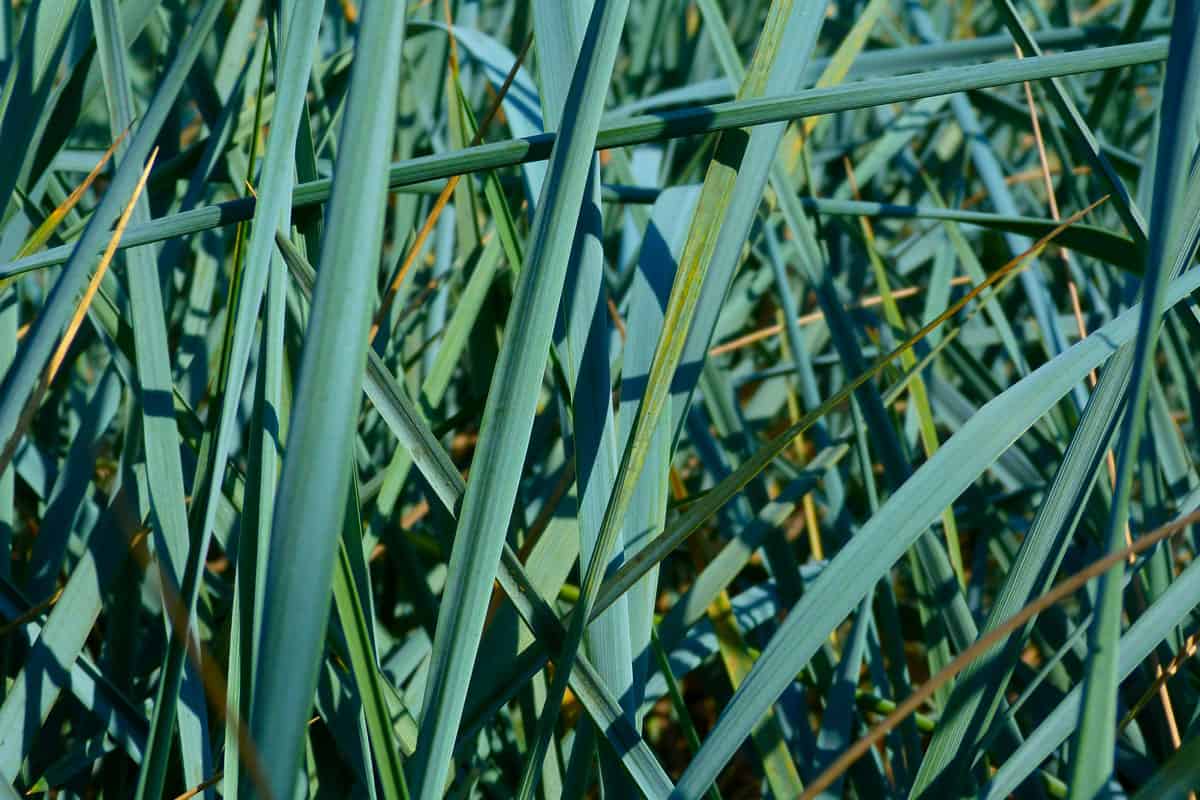
2. Blue Oat Grass
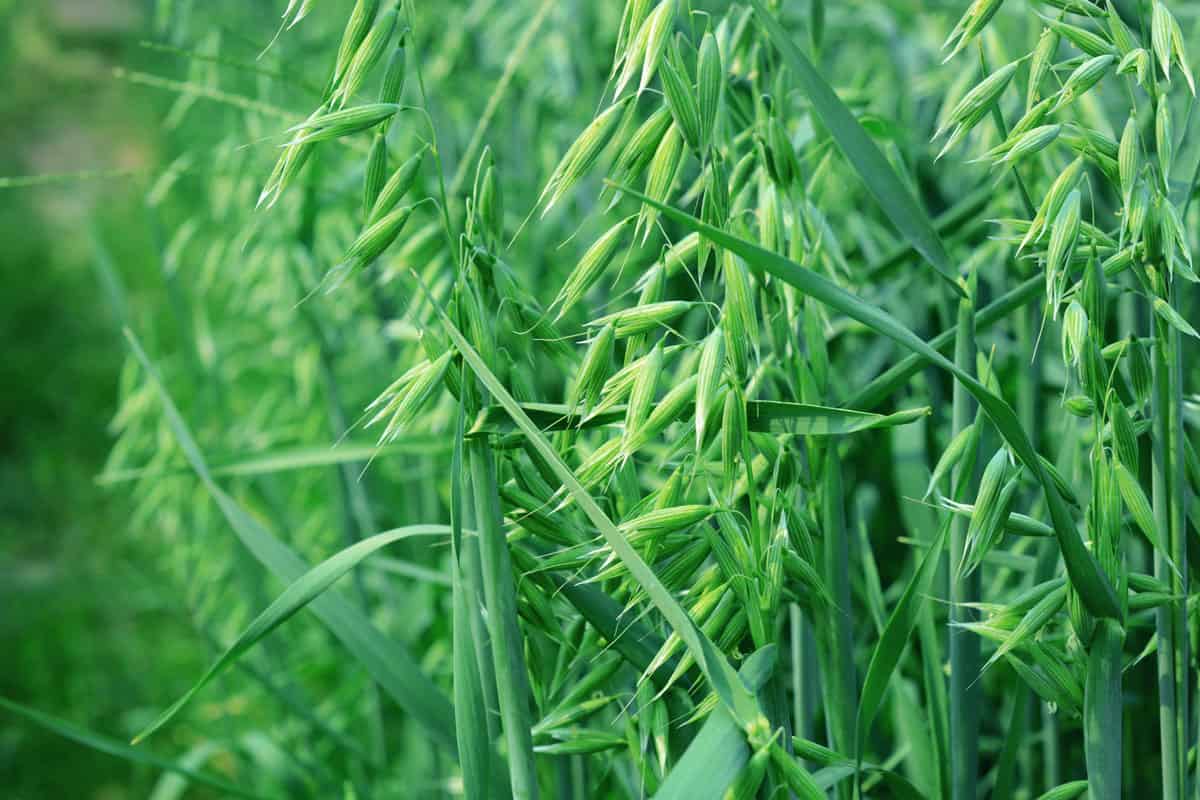
Similar to blue lyme, blue oat grass has steel blue foliage. The sapphire variety's foliage has a more prominent blue hue. Blue oat grass grows in clumps, so you can plant it alongside other plants in a single pot.
Blue oat grass thrives in Zones 4 through 9. It prefers full sun and needs to be watered regularly. While blue oat grass is perennial, it may remain evergreen in milder winters.
3. Fountain Grass
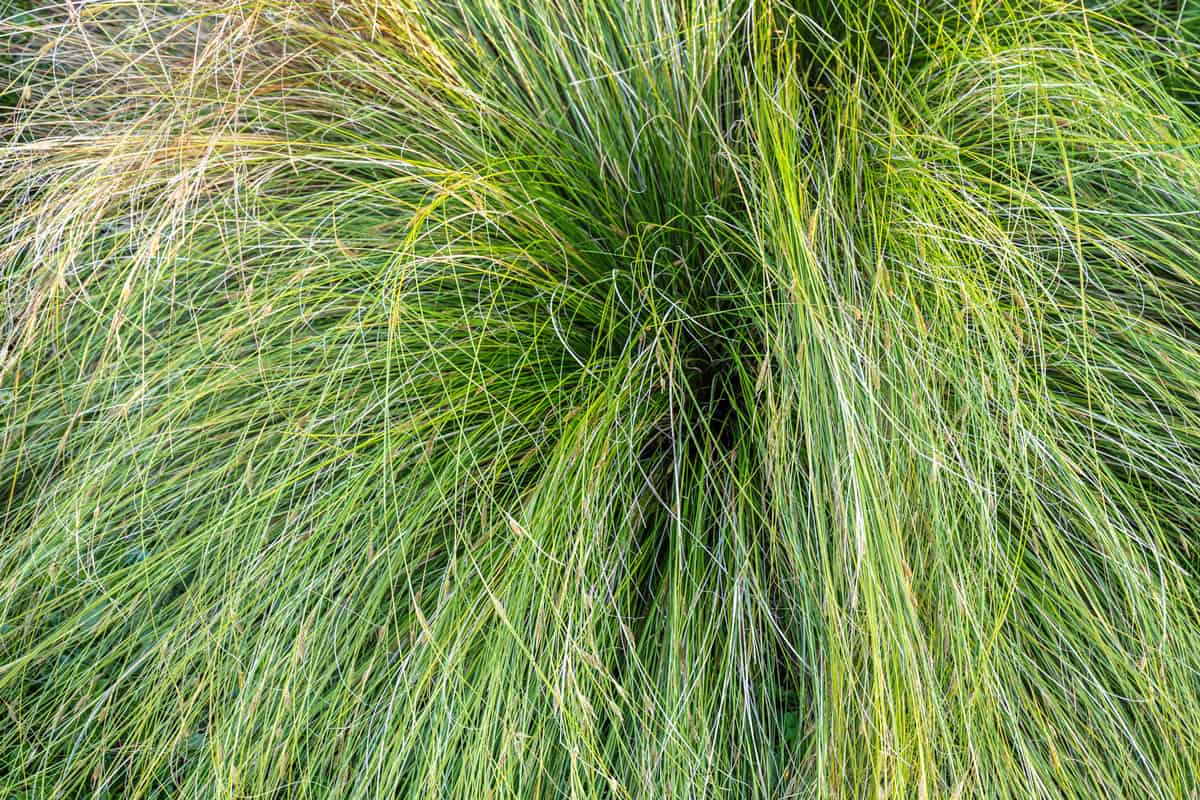
As the name suggests, this perennial grass resembles a fountain when planted in a pot or container. Since it comes in several varieties, you can get fountain grasses in an array of colors. Many of them produce flowers that can be harvested as cut flowers for your home.
Fountain grass requires full sun and thrives in Zones 3 through 10. They do not require a lot of maintenance, making them a good choice for beginners. While fountain grasses prefer moist but well-drained conditions, they are drought tolerant.
4. Bamboo Muhly
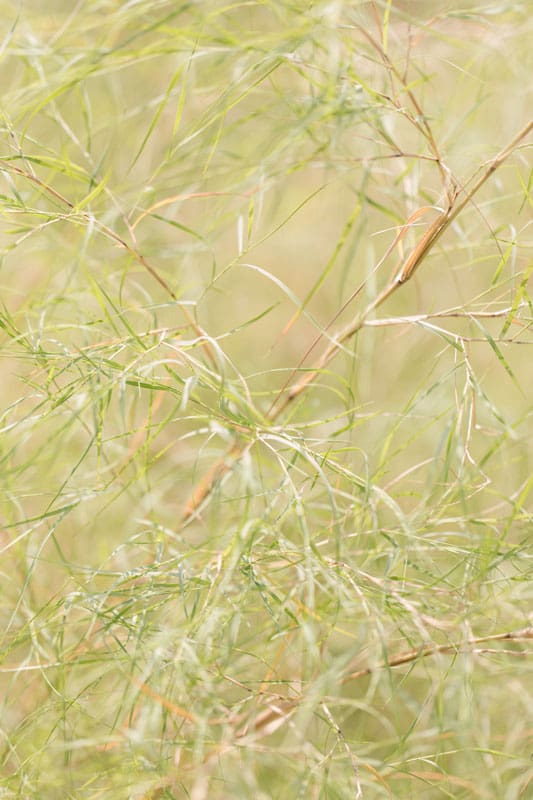
Bamboo muhly does well as a container plant, and it is a favorite among gardeners for its soft, feathery foliage. This grass features bamboo-like stalks that make it a great addition to Asian-inspired decor. Pair it with tropical flowers for a more exotic look.
This annual grass thrives in Zones 8 through 11. Bamboo muhly does not require a lot of water and is drought tolerant. While it grows best in full sun, it can be brought indoors in the winter months.
5. Feather Reed Grass
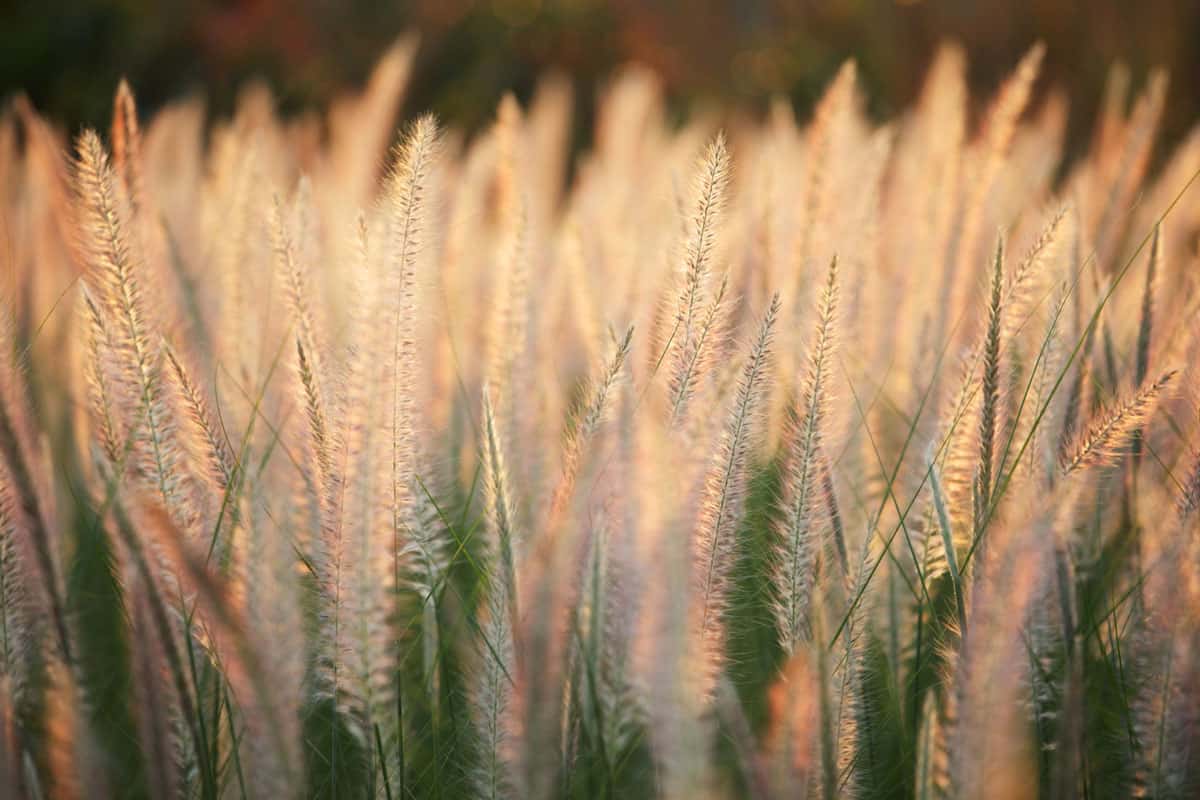
Feather reed is a versatile ornamental grass that does well both in landscaping and in pots. Gardeners favor it because it adds movement and texture to any area. Pair it with roses, black-eyed Susans, or coneflowers for an attractive presentation.
This grass can be grown in Zones 4 through 9 and prefers full to partial sun. Water it once to twice weekly or when you feel that the soil is starting to get dry. While young plants need a consistent watering schedule, mature plants are more drought resistant.
6. Japanese Silver Grass

This stunning ornamental grass adds sparkle to your porch or walkways. It's recommended to plant it with asters, geraniums, or catmint for a relaxing, contemporary look.
Zones 4 through 9 offer ideal growing conditions for this perennial grass. It prefers full to partial sun and needs frequent watering, especially when grown in containers.
7. Pampas Grass
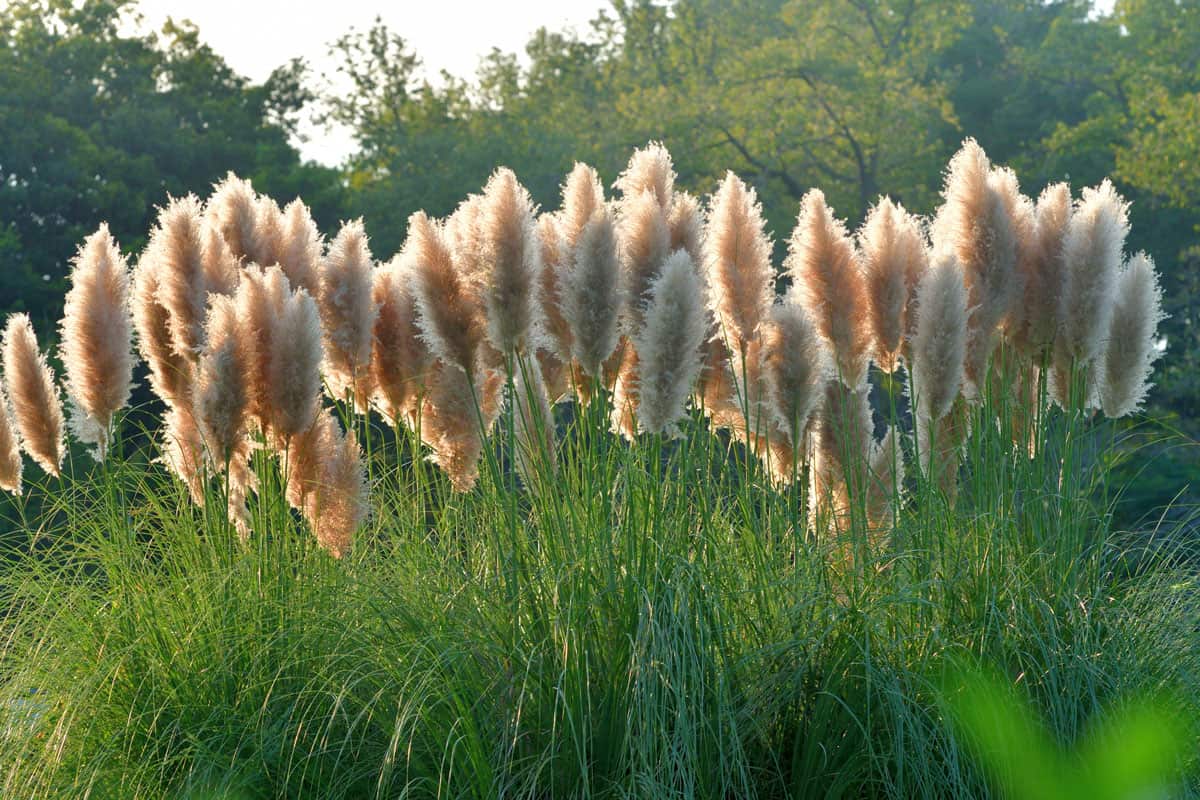
This grass gets its name from the Pampas regions of South America, the area to which it is native. Its many varieties yield blooms in colors from pink to yellow or white. Be mindful of the variety you choose, though, as each one thrives in different zones.
Overall, Pampas grass grows well in Zones 7 through 11. Full sun is ideal but this grass can also tolerate partial shade.
While Pampas grass is invasive, it will not overgrow the container in which it is planted. Be mindful of where you place your container, though, because the sharp foliage can cut you if you brush against it.
8. Switchgrass
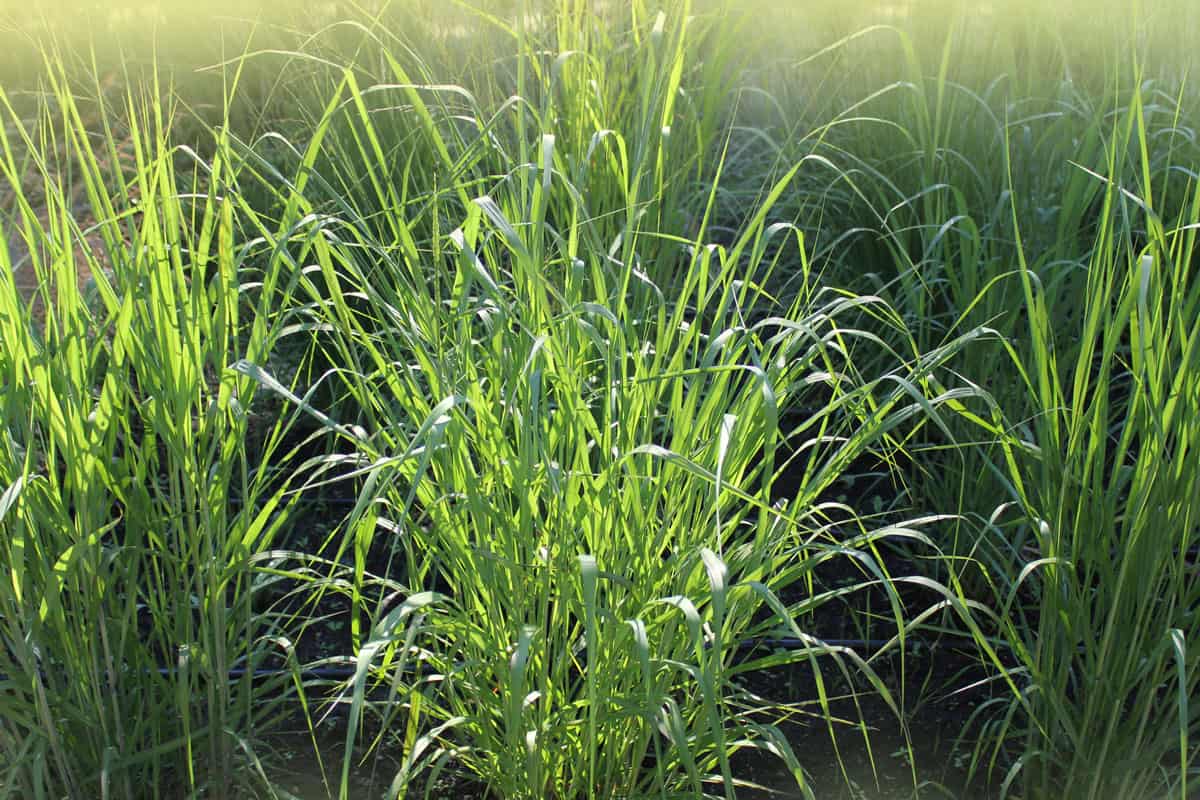
Switchgrass is a warm-weather, perennial grass with interesting foliage. Switchgrass blooms purple flowers and turns from bright green to yellow in the autumn months. It attracts birds and butterflies, making it a good plant choice for those who enjoy wildlife.
Switchgrass is a good beginner plant since it doesn't require a lot of care or maintenance. It prefers full sun and moist soil, and it thrives in Zones 3 through 9.
9. Maiden Grass
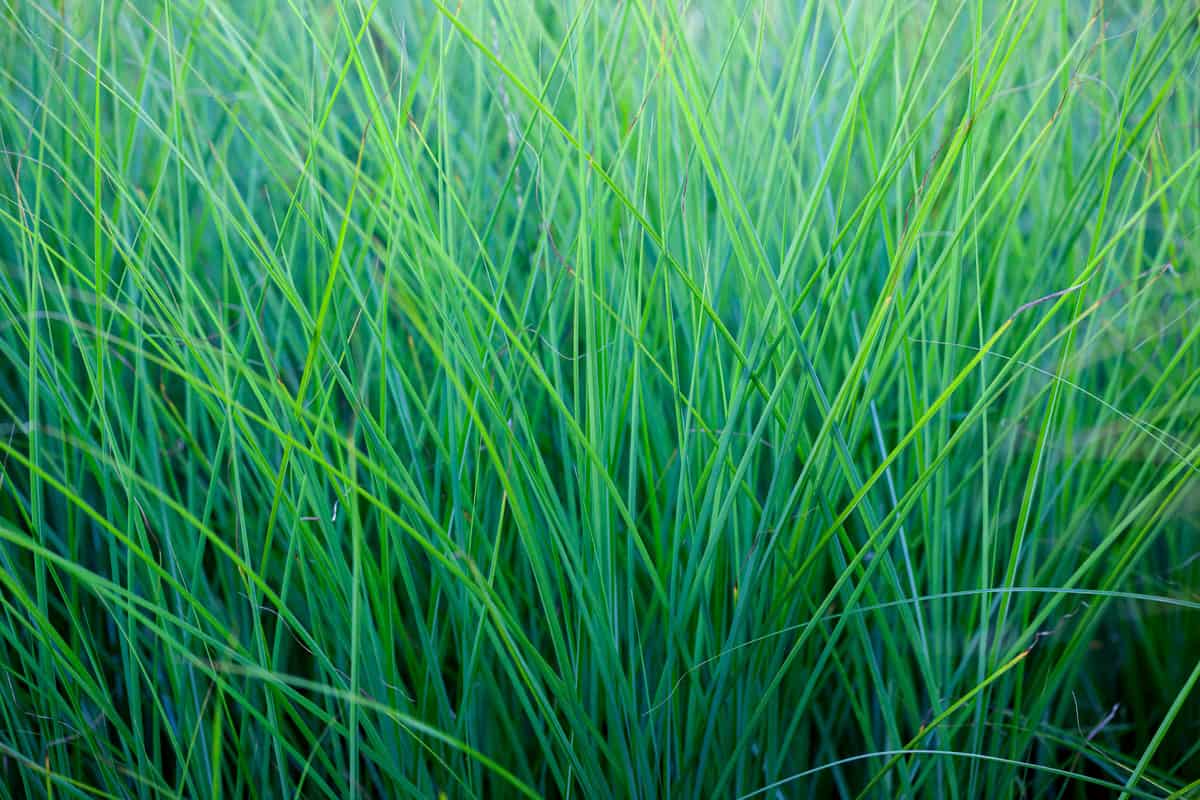
Maiden grass's foliage starts as a cool silver-green color before shifting to a warmer shade of golden bronze after the first frost. It blooms late in the summer, allowing you to enjoy the color shift in the fall. Maiden grass is clump-forming, so you can pair it with other plants.
This Asian native thrives in Zones 4 through 9. It requires full sun but has low water needs. Be sure to water it more frequently in extreme heat, however.
10. Blue Arrows Rush
Blue arrows is one type of grass in the rush grass family. It gets its name from its striking blue-green foliage.
This grass is versatile, as it thrives in gardens, ponds, and containers. It can also tolerate city living for those who want to add this grass to their apartment gardens.
This grass enjoys full sun but can tolerate partial shade as well. It grows well in Zones 5 through 9. Since it is a perennial grass, it's recommended to cut it down in the winter. It will regrow from the base of the plant in the spring.
11. Red Rooster Sedge Grass
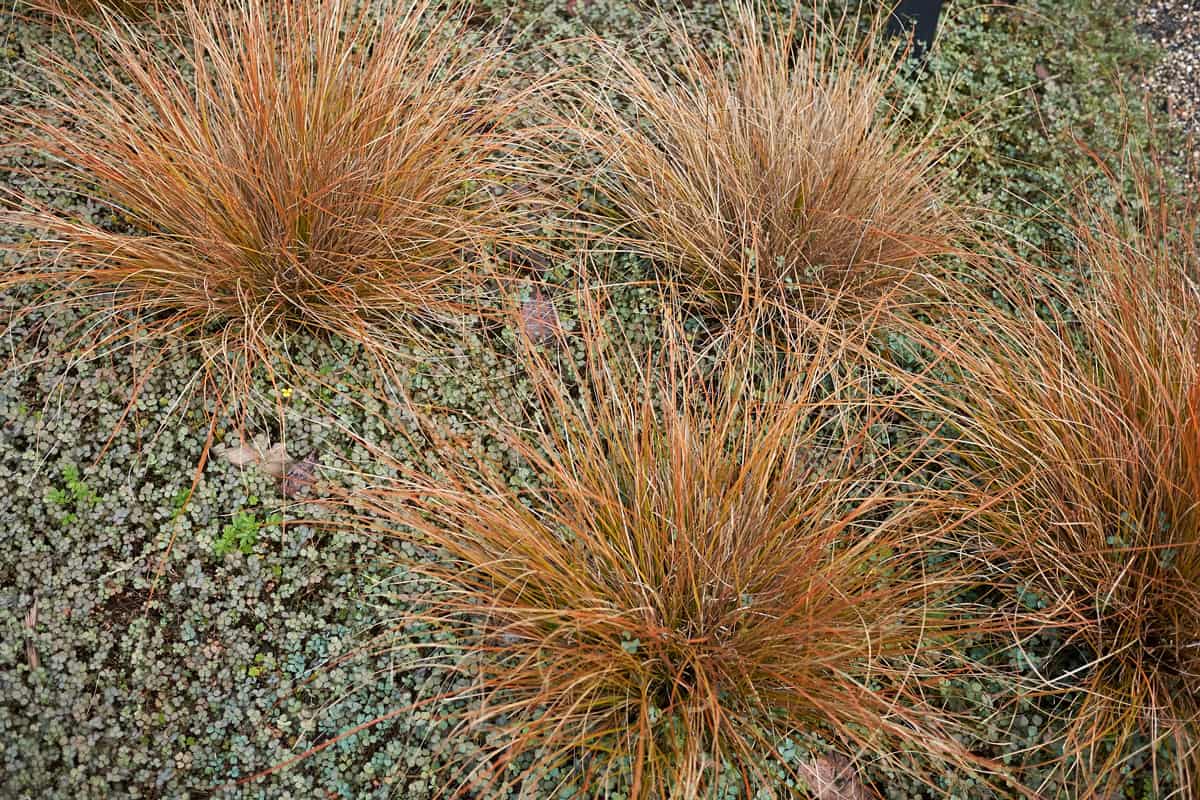
This New Zealand native is another grass that gets its name from its foliage color. Red rooster sedge grows in spiky red clusters.
Since it is evergreen, you can enjoy its warm color throughout the winter. This grass does well in large containers and can be paired with plants with foliage in cooler shades for a striking contrast.
Plant this grass if you live in Zones 6 through 9. In harsh winters, consider moving it to an area that is more sheltered, such as a covered porch. Red rooster sedge enjoys full sun but can tolerate partial shade. Do not allow its roots to dry out.
12. New Zealand Wind Grass
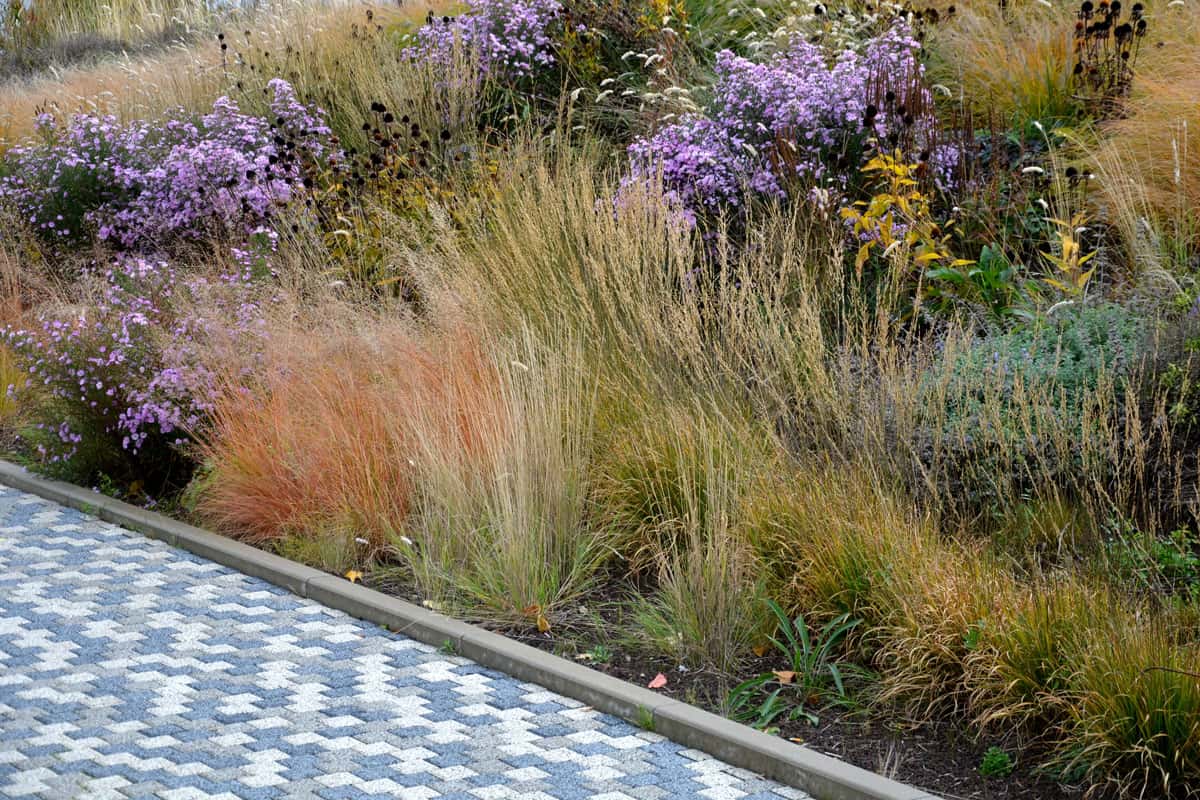
Another New Zealand native, this grass is every bit as striking as the red rooster sedge.
New Zealand wind grass is an all-season grass with foliage colors that start in shades of green and turn to warm red and gold shades in the cooler months. This grass is a perfect complement to other plants in your container garden or as a backdrop.
Also known as pheasant or pheasant's tail grass because of its colors, this grass is low maintenance. It does well in both full sun and partial shade, and it requires little water. To keep it looking its best, prune away damaged leaves in early spring.
13. Papyrus Grass

Papyrus grass, also known as the umbrella plant, is known for its thin stems and umbrella-like spray of foliage. Papyrus is a wet plant, so while it cannot be fully submerged in water, it is a good grass for water gardens. It also grows well in containers.
This grass does best in Zones 8 through 10 and enjoys full sun. It prefers to grow in water, but you can opt to water it daily if you aren't using it as a water plant.
14. Pink Muhly Grass

Pink muhly yields a high aesthetic payoff with very low effort. This grass flowers at the end of the season, so planting alongside an early-blooming grass will give you flowers to enjoy all season long.
Pink muhly grass needs a container that is at least 12 inches deep so it can grow enough for you to enjoy its full movement.
Zones 6 through 9 are ideal for pink muhly grass, and it needs full sun. If you live in Zones 8 or 9, this grass can tolerate partial shade.
This is a fairly independent plant that can grow in the natural elements with little or no extra care. Be sure to prune and divide them as needed, though, so they can avoid disease caused by too little space.
15. Japanese Blood Grass
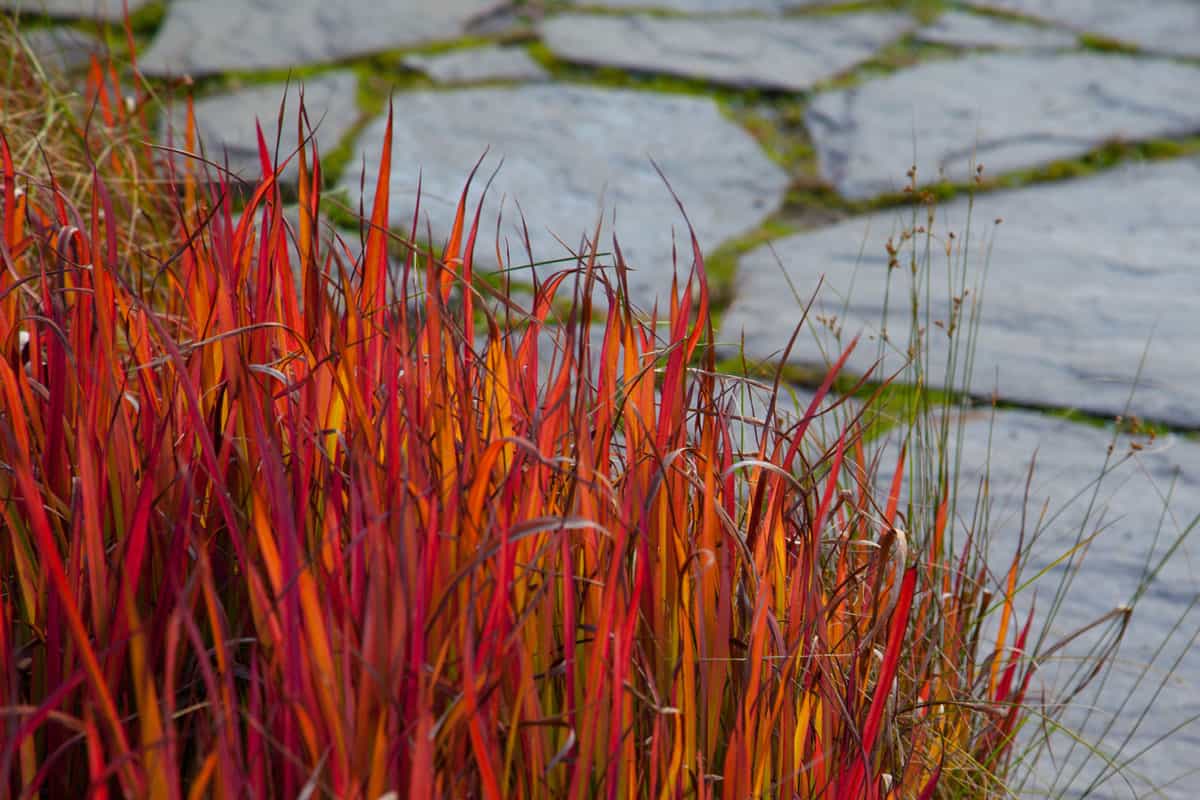
With its striking blood-red color, it is no wonder that this grass is named Japanese blood grass. It does well in containers and attracts butterflies, making it a good addition to a container pollinator garden. Plant it with plants in cool hues for contrast or with warm-colored plants for a fiery display.
Japanese blood grass can tolerate partial sun, but its colors are more vibrant in full sun. It thrives in Zones 5 through 9, and it is fairly low maintenance. It is drought tolerant once it is established, and it only needs to be watered when the leaves are getting dry and brown.
In Closing

Ornamental grasses are great choices as backdrops for other plants and flowers or as standalone plants. Many of the ones we've suggested are easy to care for, so even beginners can have great success with them. With a wide range of colors and looks, these grasses can fit well into any gardening look you hope to achieve.
Take a look at these articles to help you choose the perfect planters for your grasses:

Can any of these be grown in 5B near black walnut trees?